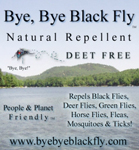Identifying Amphibians & Reptiles…..
Amphibians and Reptiles are referred to as Herptiles, animals that creep. However, most do not move by creeping, frogs and toads hop, snakes slither and turtles swim but it might be agreed that some species ‘creep-us-out’ when we stumble upon them unexpectedly. It makes sense that Scientists who specialize in the study of Amphibians and Reptiles are called Herptologists.
Since Herps depend on the environment to keep their bodies warm enough to survive, they have limited ranges throughout Maine due to climate and temperature variations. Although the northern forest is rich with clean water sources, it is not suitable habitat for most reptiles. Amphibians are better adapted to survive in this same forest area that experiences January temperatures often below zero degrees Fahrenheit for multiple days in a row. They are small and can exist within the leaf litter from early spring until late fall before the ground freezes. The leaves act like a blanket holding in the warmth of the soil where small Herps are active until hard frosts and snow covers the ground. Due to their small size, they can easily bury themselves into muddy places deep underneath swamps and mossy bogs.
As Predators, both Amphibians and Reptiles are an important part of the food chain. They primarily eat invertebrates and will also consume vertebrate animals smaller than themselves. In turn, they find themselves prey to larger animals, especially mammals and birds.
Amphibians and Reptiles are grouped separately from Mammals and Birds because they are both Cold-Blood Vertebrates. Lacking fur or feathers and no internal metabolism, they are Ecotothermic meaning “outside – heat” and must rely on external ways to keep warm and survive. Herps regulate their body temperatures by absorbing heat when basking in the sun, resting on warm rocks and when too warm moving into the cooler places.
This group of animals has distinct differences placing Herps into 2 separate categories.
Amphibians live a ‘double life’, hatching from a mass of eggs laid in water and eventually go through metamorphosis changing from a swimming larva with gills to grow legs and depend on oxygen absorbed through their skin and lungs. Many species live as adults on land returning to the water each year only during mating. Maine has 2 Groups of Amphibians, the Anura commonly known as Frogs and Toads and the Caudata or Salamanders.
Reptiles are less dependent on water. They are able to lay their eggs on land because of a shell that protects the developing young from moisture loss. Also, the body of the Reptile is covered in either Scales, as in snakes or Plates as in the turtles shell. Maine has 2 Groups of Reptiles, the Serpents or Snakes and the Testudines commonly called Turtles. It should be notes that some species of snakes do not lay eggs but rather give birth to live young.
The North Atlantic Ocean and the Gulf of Maine are habitat for 5 species of Marine Turtles. Of these, the Loggerhead, Atlantic Ridley and Leatherback have all been reported along the coast. All 3 species are listed on the IF&W Endangered species list and any sightings should be reported to Wildlife Biologists.
Here is the Taxonomic breakdown of Amphibians and Reptiles found in Maine.
Domain: Eukarya
Kingdom: Animalia
Phylum: Cordates
Subphylum: Vertebrates
Class: Amphibians
Order: Anura Families of Frogs and Toads
Order: Caudata Family of Salamanders and Newts
Class: Reptiles
Order: Serpentes Families of Snakes
Smooth Scaled: Smooth Green, Black Racer, Ringneck and Milk Snakes
Keeled Scaled: Ribbon, Timber Rattlesnake (Extirpated), Water, Brown, Redbelly & Garter Snakes
Order: Testudines Families of Turtles



